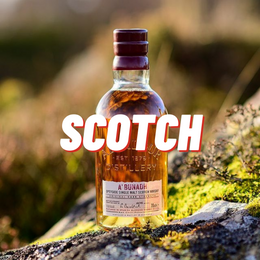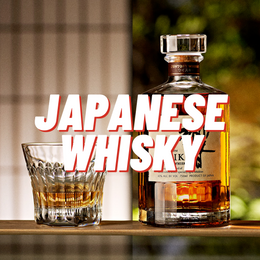
What the heck is that?
Malt. Malt extract, malt syrup, chocolate Maltesers, malted milk powder, malt beer and single malt whisky. Malt seems to be the key to making many of our foods and drinks taste so good. But what is malt, and how do we make it?
Malt is created during the the malting process. During this process, humans trick barley grains into thinking it’s Springtime so that they germinate and sprout to grow into a new plant. The result is malted barley that is full of rich sugars, natural enzymes and nutritious vitamins that gives us our wonderful foods. (Actually, other cereal grains can also be malted, but barley is mainly used. Rye, wheat and corn are used much less frequently.)

Who cares?

Malting is an important step of single malt whisky-making. After all, a large proportion of the flavour of the spirit comes from the malt.
There are 3 main stages of the malting process.
(1) First, raw barley is steeped in water, in a drum, for several days.
(2) Next, the wet barley is spread out across the cool stone floor in a temperature-controlled room to allow the grain to undergo germination. During this time, the barley is tricked into thinking it’s springtime, and begins to undergo germination - converting its starches into sugars. During this process, the distillery staff take shifts every few hours to laboriously aerate and turn the barley using a shovel to promote even germination and prevent mould.
(3) Once the barley has partially sprouted, we stop the process by kilning the barley. All the barley is taken to a large kiln for heating and drying. Peat is used as fuel if we want to make a smoky, peaty whisky. Otherwise, the staff would stick to coal for a neutral-tasting spirit.

Traditionally, Scotch distilleries would do their own malting process in-house on stone floors. But in the 1960s, greater demand for Scotch whisky led to a reliance on cheaper malt provided by “commercial maltings”. These are big facilities that specialise in malting huge quantities of barley to be sold to beer breweries, bakeries and Scotch distilleries.

Be that as it may, a handful of distilleries such as Springbank, Highland Park and Laphroaig continue to use the traditional floor-malting process (which is significantly more costly, effort- and time-intensive). It may not be possible to exactly explain how floor-malting influences the flavour of their whisky. But Highland Park’s representative thinks this is key to the iconic notes of heather in their single malt:
“If this was just a marketing story and added no flavour to the whisky – why the hell would you do it? We know through tests that were about trying to cut costs that it diminishes the character of Highland Park, and you don’t get that heather-honey sweetness.”
Despite the higher cost and effort involved, these folks are strong believers that floor-malting is key to maintaining their unique and distinctive flavour profiles, and we can applaud them for that.
Why should I care?
The malting process is essential to the creation of Single Malt whisky - which many drinkers believe is more complex in flavour, texture and character (as compared to blended whisky or grain whisky). Understanding a little bit of the magic behind the malting process helps us understand why single malt remains one of the most expensive and sought-after categories of whisky.
Knowing about the floor-malting debate also helps us appreciate why certain craft distilleries (such as Springbank) are admired for sticking to more expensive but traditional methods. While much of the conglomerate-dominated industry today would claim that there is little evidence that floor-malting makes any difference to the taste of whisky, this argument misses a point. In places like Scotland or Ireland and even Japan, malt whisky is tied very much to tradition and old ways of doing things. It is undeniable that much of the magic and wonder of the malt whisky industry lies in outdated Victorian-era equipment and old techniques that endure till today. Whisky-making back then was much closer to alchemy than science. Even today, we don’t need to demand an explanation for everything.







